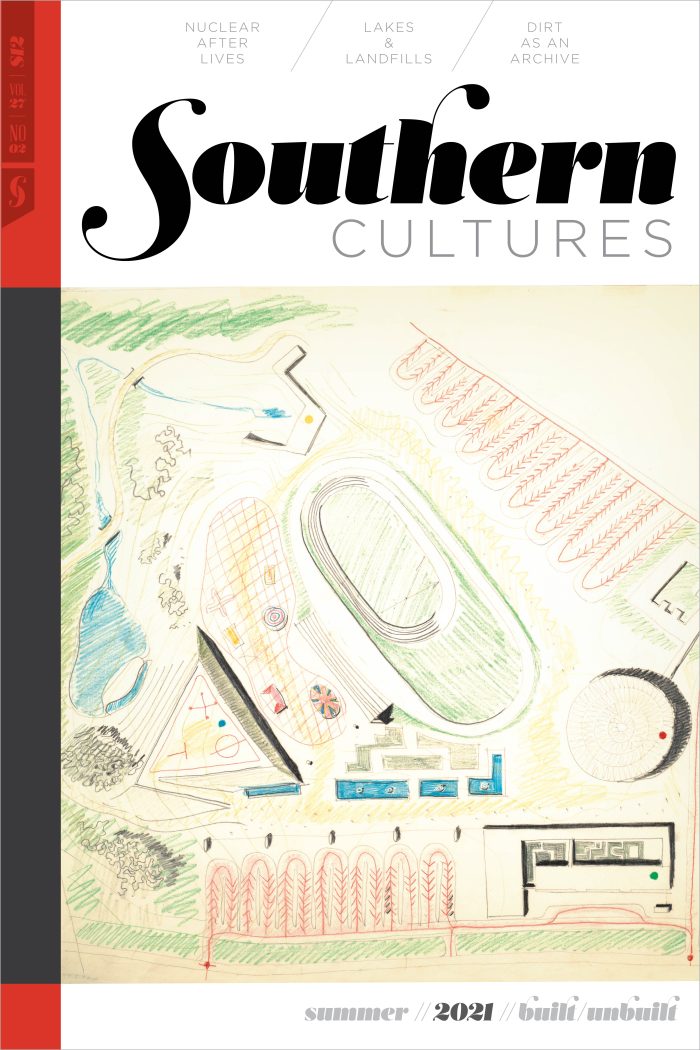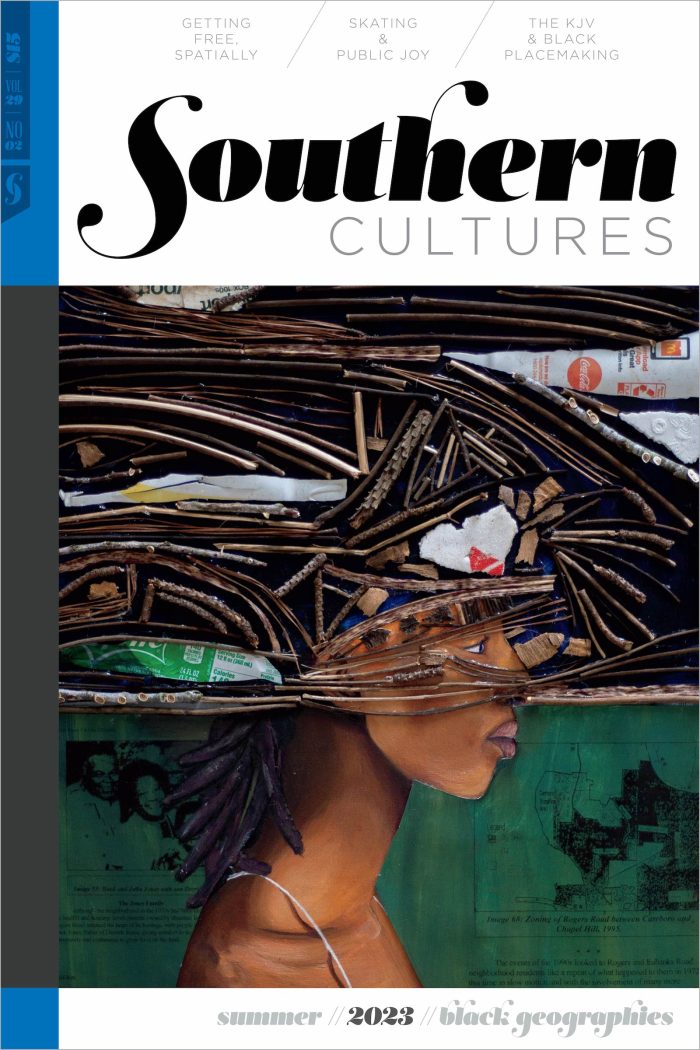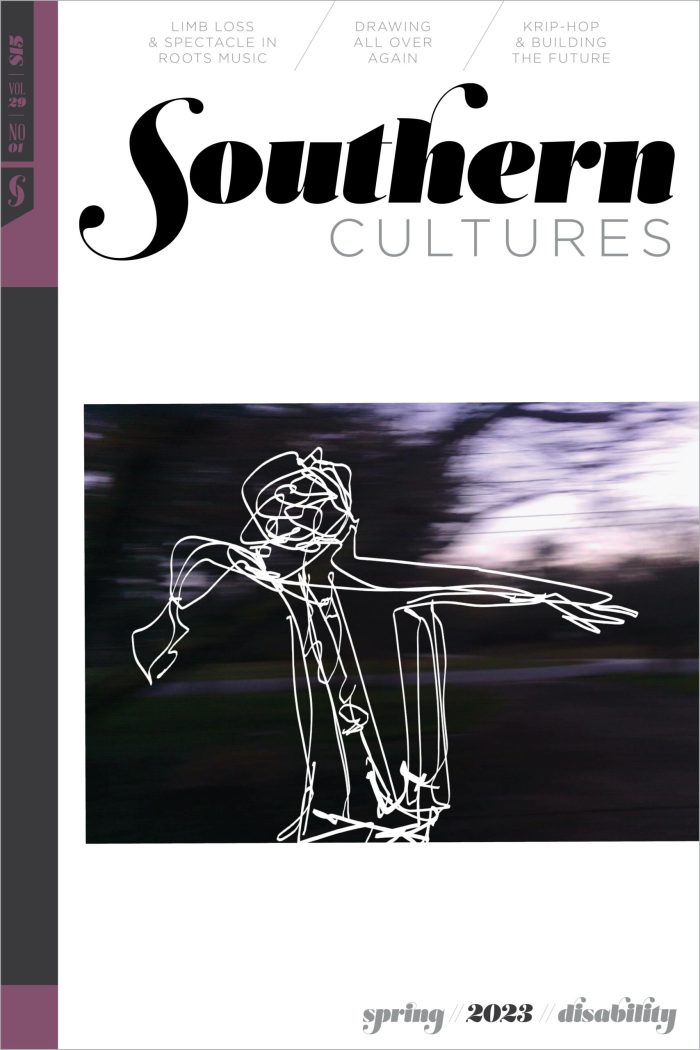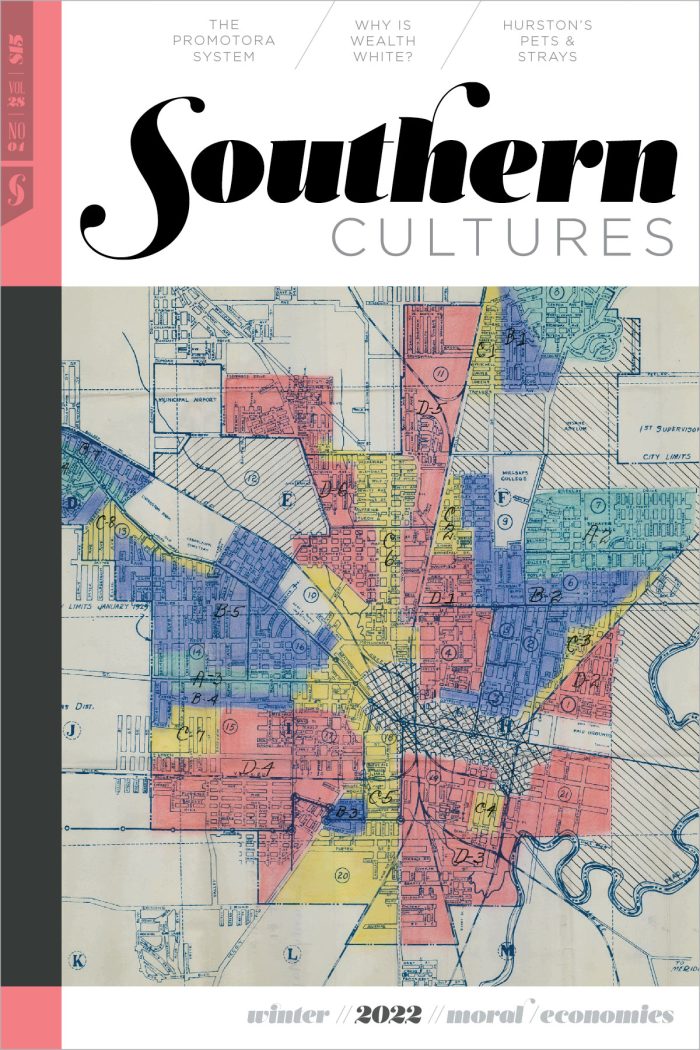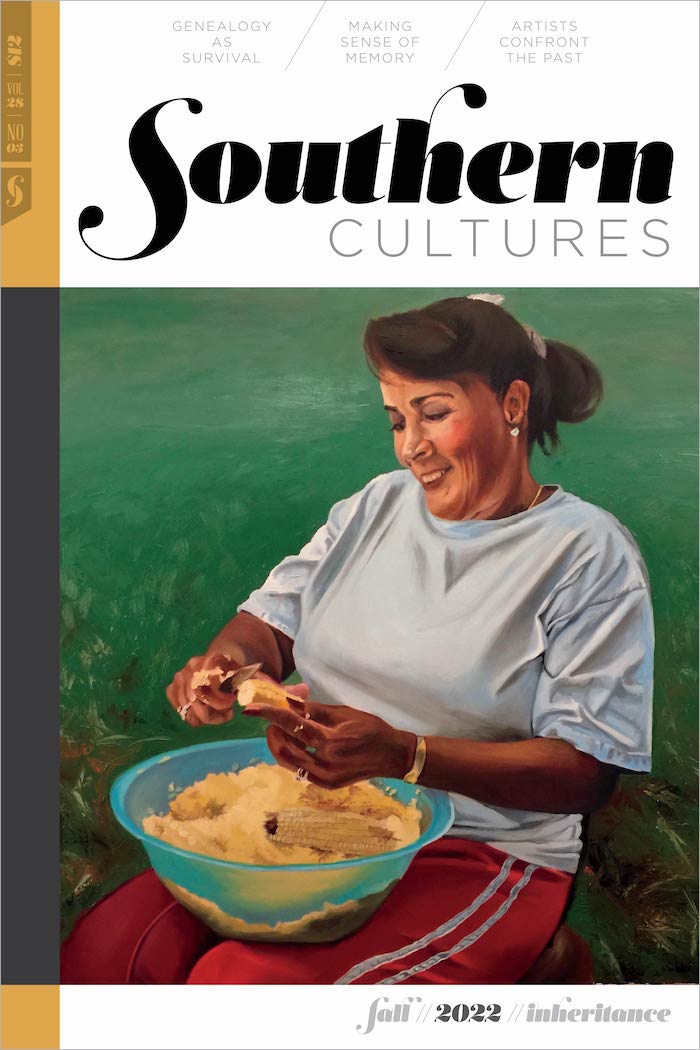Essay
BUY ACCESS
by Tom Rankin
I have always been drawn to those places that mark the landscape, serve as our monuments of remembrance and guide our way and knowledge of the local, seeming to last in our consciousness even when they have nearly disappeared on a return to their previous unbuilt state. “It’s over there where Cedric’s house used to »
Essay
Dorton Arena's Incomplete Legacies
by Burak Erdim
Among the expected turkey legs, fireworks, cotton candy, and Ferris wheels, Dorton Arena presents a familiar yet extraordinary sight at the North Carolina State Fairgrounds. Defined by its double hyperbolic arches, the building looks like an alien spaceship and brings to mind similarly shaped structures in sci-fi flicks or at equally iconic contemporary sites, such »
Essay
BUY ACCESS
Florida at the American Museum of Natural History One Hundred Years Ago
by Henry Knight Lozano
“Frozen in space and time, its artificial landscape literally preserved Florida as a reptilian state on the brink of modernity.” In the summer of 1918, just over a year after the United States entered the First World War, a new exhibit opened at the American Museum of Natural History (AMNH) in New York City. Thousands »
Essay
by Annie Simpson
I. The K Reactor at the Savannah River Site (SRS) sits on the eastern bank of the Savannah River, facing west over six miles of woods and swampland, which remain uninhabitable for humans. The reactor is now a tomb for thirteen tons of plutonium, the highly radioactive fuel—and deadliest substance known to us—that powers hydrogen »
Photo Essay
by Cici Cheng
When I was six years old, my family and I packed up our life in four suitcases and left Sanming, my hometown, located in the western Fujian province of China. I didn’t know where I was going, and my parents didn’t know what they were expecting. All we knew was that we were moving to »
Essay
by Alex Hofmann
It was not supposed to end like this. On September 15, 1896, “Crush, Texas,” was supposed to be just another kinetic spectacle in a place replete with them. The name was a double entendre, both a cheeky allusion to the staged head-on train collision scheduled to take place there and an eponym for William G. »
Essay
BUY ACCESS
An Old South Landscape for a New South City
by Steve Gallo
“Entering the park was like visiting an idealized past.” As Clement A. Evans, the Confederate general turned Methodist minister, mounted the makeshift pulpit and surveyed his surroundings on April 27, 1890, Atlanta’s Grant Park appeared more like a military camp than a public pleasure ground. Rows of white tents were erected on the greensward and »
Photo Essay
Carrie Mae Weems and the Architecture of Colonization in the "Louisiana Project"
by Claire Raymond,
Jacqueline Taylor
In her series (Untitled) Kitchen Table (1990), photographer Carrie Mae Weems explores and questions perceived notions of racial and racially gendered identity, using the familiar, everyday experience of a woman seated at a domestic kitchen table. Alternating between images of herself alone and with a male lover, child, or with other women, she figures the »
Essay
Land, Labor, and Dispossession in New Orleans and Honduras
by Deniz Daser,
Sarah Fouts
When the body of Jose Ponce Arreola—one of three workers killed during the October 12, 2019 collapse of the Hard Rock Hotel in New Orleans—was finally removed from the hotel ruins in August 2020, the press asked his brother, Sergio, what should be built once the rubble was cleared. Sergio said, “A park dedicated to »
Essay
Excavations from a Texas Woman
by Endia L. Hayes
Land of the sweet, never sour, Sugar Land, Texas, offers a surburban alternative outside the expanding Houston area.1 The city has gone by many names. In 1838, two years into the Republic of Texas’s victory over the Republic of Mexico, what is now Sugar Land was named the Oakland Plantation. Stephen F. Austin (the “Father »
Photo Essay
by John Lusk Hathaway,
Mark Long
I. Geographer Dennis Cosgrove has written that American landscapes may best be apprehended from the air. So vast are US landscapes and, likewise, our interventions to rework them, that a vantage point at that level of remove is necessary to appreciate the scale of physical and human geographies here. Nowhere, perhaps, is that perspective more »
Essay
In Search of Atlanta's Lake Charlotte
by Hannah S. Palmer
Lake Charlotte started to bother me one summer while I was working on a freelance project with a nonprofit called Trees Atlanta. Somewhere in the organization’s sunny building, I saw a poster illustrating Atlanta’s tree canopy—a kind of heat map of trees that needed saving. Red-orange blocks downtown sprawled into yellow-green neighborhoods and green parks. »
Poetry
BUY ACCESS
by Jessica Jacobs
said the rabbis, around the Torah. And this worldis lousy with them. More than we can counton our dog walk alone: chainlink and stone and white wooden pickets. Fences to keep people’s bad barking dogsin, to keep our bad barking dog out. His nostrils flaringwide as a twirled skirt as he reads the tales of »
